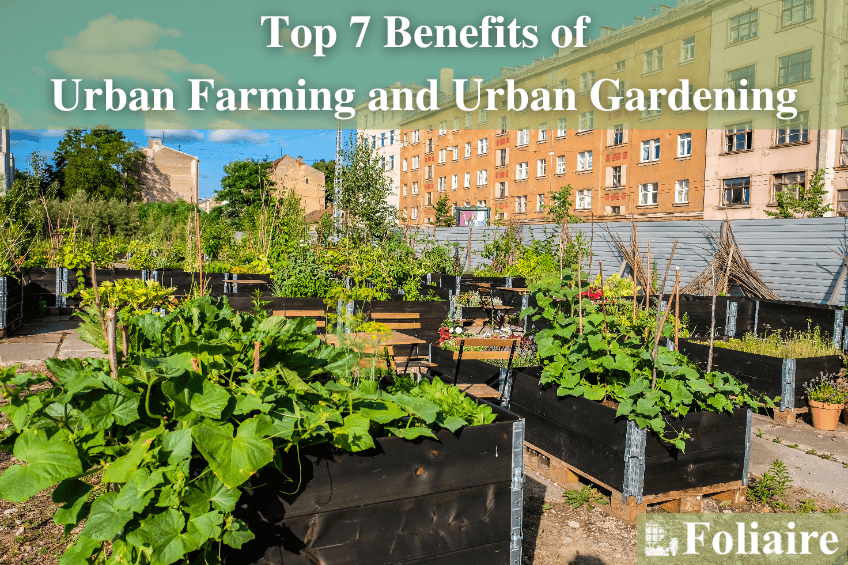Top Guidelines Of City Blooming
Top Guidelines Of City Blooming
Blog Article
Not known Incorrect Statements About City Blooming
Table of Contents5 Easy Facts About City Blooming Shown5 Simple Techniques For City BloomingThe Main Principles Of City Blooming Not known Facts About City BloomingThe 9-Second Trick For City Blooming
Interested in growing food to buy in the City of Chicago? Considering beginning an area yard? Modifications to the Chicago Zoning Regulation permit farming usages like community yards and urban farms in lots of parts of the city. Below is a listing of often asked inquiries pertaining to the rules and laws that farmers should take into consideration when planning a city agriculture job.
The zoning modification does not modify any type of various other codes dealing with composting, structure authorizations, acquiring or renting City possessed property, business licenses or ecological contamination. There are existing codes that regulate these problems and they continue to be in complete impact and may apply to your project. Neighborhood yards are typically possessed or handled by public entities, civic companies or community-based organizations and maintained by volunteers.
Urban farms grow food that is intended to be marketed, either on a not-for-profit or for-profit basis. Due to their industrial purpose, city ranches need a service license.
Facts About City Blooming Revealed
The quantity of compost material can not surpass 25 cubic lawns at any kind of given time according to the requirements in 7-28-715 of the City's Municipal Code. Since the dirt at a lot of new garden sites needs changing, compost, dirt, wood chips, or various other products can be acquired to construct or improve the growing room.

If a structure license is needed after that the hoophouse will be taken into consideration an accessory structure. You can discover even more concerning the structure license requirements by contacting the Division of Buildings. The 25,000-square-foot dimension limitation is meant to protect against a single neighborhood garden from dominating an offered block or detracting from the block's existing property or industrial character.
The limit does not apply to gardens located in Public Open Room (POS) areas. Can there be even more than one community garden that is 25,000 square feet on a solitary block? Secure fencing is not required, nonetheless, yards that have large vehicle parking areas might be required to mount fence or various other landscape design features.
The City Blooming PDFs
B1 & B2 areas need that all business usage activities be carried out inside. R districts restrict industrial activity. The policies reflect the objective and intent of the Zoning Code. Is secure fencing needed for city farms? Yes. Fencings might be needed, along with landscaping and screening, for certain parking lot and outside work or storage space areas depending upon location and the certain task occurring.
Yes. Urban ranches need building authorizations and zoning authorizations before construction. Other forms of city evaluation may be called for relying on certain frameworks, tasks, size, landscape design, licensing, public heath and stormwater monitoring concerns. Most of these requirements are identified in the job style or allowing procedure, however, the applicant may be liable to individually recognize particular licenses or permits that may be required.
The Division of Company Affairs and Customer Defense can help determine the specific type of organization license that's called for. Off road car park is needed for most business projects in Chicago. The called for number of vehicle parking spaces is based on the number of employees functioning on site and not the square video footage of the growing space.
The City Blooming Ideas

A metropolitan ranch can market garden compost product generated on website, however, the operation needs to abide with the laws in 7-28-715 of the Chicago Municipal Code. Aquaponic systems are allowed indoors on metropolitan ranches in many zoning areas.
Approximately 5 hives or swarms of honey bees might be kept as an accessory use. Nonetheless, her latest blog beekeepers have to register with the Illinois Department of Agriculture. To learn more regarding the suggested zoning modification you might speak to the Department of Real Estate and Economic Growth, Bureau of Preparation and Zoning at 312.744.8563.
Farming in cities and metropolitan areas A metropolitan ranch in Chicago. Urban agriculture refers to various techniques of cultivating. https://www.twitch.tv/cityblooming/about, processing, and distributing food in city areas. The term likewise relates to the area tasks of pet husbandry, tank farming, beekeeping, and cultivation in a city context. Urban agriculture is differentiated from peri-urban farming, which happens in rural areas beside residential areas.
The Definitive Guide for City Blooming
, who look for to form social networks founded on a common principles of nature and area holism. These networks can create by way of official institutional support, ending up being incorporated into regional community preparation as a "change town" movement for lasting city advancement.
Some of the very first proof of urban farming comes from Mesopotamia.
Report this page